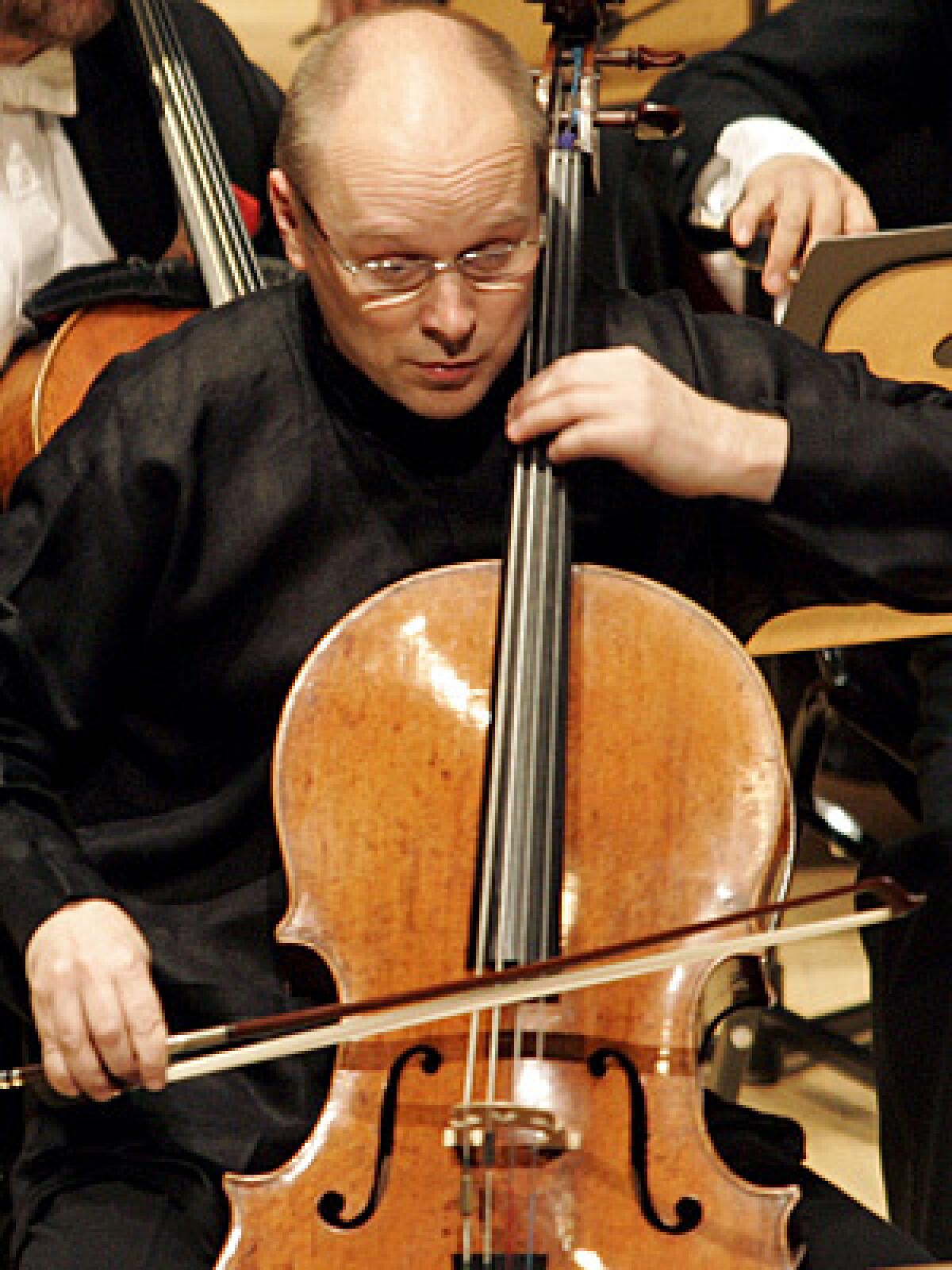The L.A. Phil’s invitation to dream

- Share via
I don’t know that Baudelaire meant music in his poem “Invitation to the Voyage,” when he thought of a world far away -- exotic, unobtainable, a land lost in love’s gaze. “All is order there, and elegance,” he wrote, “pleasure, peace and opulence.” But I think he did.
Music as an outpost of order, pleasure, peace and opulence kept Bartókéla+Bartók and Stravinsky sane when their world was not. In 1936, with the Nazi takeover of Hungary inevitable, Bartók turned to fugues and the mathematical Fibonacci series for “Music for Strings, Percussion and Celesta,” one of his most magical scores.
Stravinsky responded to the raging Second World War from his West Coast outpost with a neoclassical “Symphony in Three Movements,” sometimes ferocious but mostly abstract and beauty-filled.
Both these titans of 20th century music returned to the 18th century’s sonata form when their own time had become intolerable.
Bartók’s great score began the Los Angeles Philharmonic’s program at Walt Disney Concert Hall on Friday night; Stravinsky’s ended it. In between came actual music from a world far away, which is the translation of the French title of Henri Dutilleux’s bewitching, Baudelaire-besotted cello concerto, “Tout un Monde Lointain . . . .” The phrase comes from another Baudelaire poem, “The Head of Hair.”
These are pieces central to Esa-Pekka Salonen’s repertory, and the Disney performances were extraordinarily vivid. Salonen recorded Stravinsky’s symphony in London, a young conductor intent on wowing the world. He made a strong, cool recording of the Bartók in 1996 in Los Angeles with the Philharmonic. He conducted the Dutilleux concerto, which was written for Mstislav Rostropovich in 1970, here in 1995 with Lynn Harrell.
As he has been demonstrating all month in the waning weeks of his next-to-last season as music director, Salonen now is remarkable for depth, maturity and meaning. The great playing we take for granted, however significant Friday’s technical accomplishment was.
The inspired poetic content was, however, Plan B. A new cello concerto for the evening’s soloist, Anssi Karttunen, from the British composer Oliver Knussen was commissioned but not finished. Knussen is often late with scores, and it is not uncommon for ensembles to make backup plans.
A pivot point between the sincere wartime masterpieces, Dutilleux’s concerto served as an invitation to dream. Lines from Baudelaire inspired music lethargic and restless, lost in love. The cello sings as trembling soul, the orchestra often shimmers in delicate textures. Rostropovich played the solo as a world up close -- intense, dramatic, darkly seductive.
Karttunen, instead, illuminates. He makes the most virtuosic passages sound natural. He achieves a wider range of colors than I’ve ever heard from the cello. The stunning playing Friday was in a class of its own.
Salonen’s Bartók remains on the cool side. He began in near silence in the first movement’s opening fugue. The orchestra is divided into two, and Bartók takes advantage of spatial separation of instruments. The counterpoint is complex, the rhythms uneven. The fugue is a structural monument, conceived around the Fibonacci numbers (1, 2, 3, 5, 8 . . .) common to nature, like that of a spiral shell. The music stands as a monument to the natural world that Bartók knew was threatened.
And like nature, Bartók beguiles the senses with his deep sense of order and gorgeous sounds. In Disney, with the purity of sound matching the purity of concept, a celesta’s enchanting tinkle against the strings or the woodpecker tapping out nighttime Morse code in the slow movement felt as though fantasy had became real. The last movement dances; folk tunes are evoked; but exhilaration is not carefree. Salonen’s approach was forceful, thrilling but crucially moody.
Stravinsky’s symphony has a quality of Mozart made clean, modern and utilitarian -- heavy musical furniture given the IKEA treatment. No matter how primitivistic or violent he could be, Stravinsky the clinician made sure notes were properly placed.
The heat in the first movement is lowered by an obbligato part for piano. The haunting Andante is dominated by the harp. In the last movement, Stravinsky got caught up in wartime fervor, suggesting goose-stepping marches and a roof-raising victory chord at the end, but he kept a firm hand on the structure.
Friday was the first time the piece was played in Disney, where the crispness and power are in ideal balance. The Philharmonic, which first played the symphony in 1947, two years after it was finished, is at home in the style as the Vienna Philharmonic is in Mozart. Salonen exaggerated nothing, yet gave the score a bright immediacy that opened the ears.
Joanne Pearce Martin played the evening’s crucial, killer keyboard parts; Lou Anne Neill was the harpist in the Stravinsky. We were lucky to have their elegance and opulence.
More to Read
The biggest entertainment stories
Get our big stories about Hollywood, film, television, music, arts, culture and more right in your inbox as soon as they publish.
You may occasionally receive promotional content from the Los Angeles Times.











